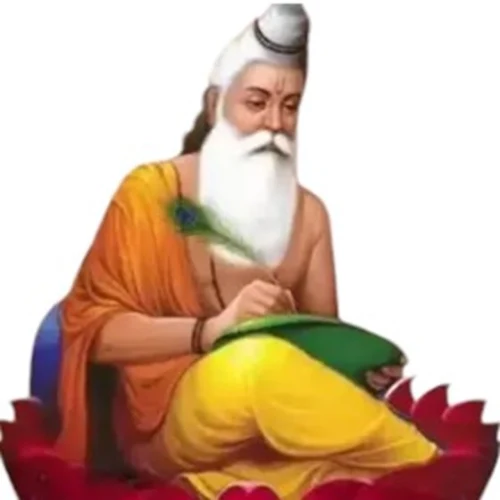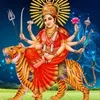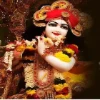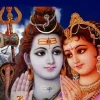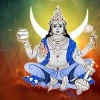Maharishi Valmiki is known as Adi Kavi because he composed the first epic work in Sanskrit, Ramayana. Valmiki's life and his works hold a unique place in Indian culture and religion. His story and contribution are considered extremely important in Indian literature, religion and history.
Early life of Valmiki
Birth of Valmiki
Valmiki's early life was full of struggle. His real name was
Ratnaakar. In his childhood itself, he came in contact with bad people and became a
dacoit. Looting and harassing the passersby in the forests became his means of livelihood.
The Transformation of Valmiki: One day when he was attempting to rob a sage (mostly Narada Muni), the sage made him think about his life and sins. Sage Narada asked Ratnakar if his family would share the fruits of his sins with him? Hearing this question, Ratnakar asked his family, and when he got a negative answer, he had a transformation.
Narad Muni advised him to chant the name of
Ram. It is believed that he chanted "Mara Mara", which eventually became "Ram". After a long period of meditation, he became Maharshi Valmiki and was recognized as a great sage.
Composition of Ramayana by Valmiki
Epic of Ramayana
Valmiki composed the epic Ramayana in
Sanskrit, one of the most famous epics in the world. Ramayana is the story of the life of Lord Rama, his religion, ideals, and struggles. Ramayana has a profound influence on Indian society, culture, and religious beliefs. Ramayana contains 24,000 verses and is divided into seven Kandas (sections): Balakand, Ayodhyakand, Aranyakand, Kishkindhakand, Sundarkand, Yuddhakand, and Uttarakand.
Reason for the composition of Ramayana
It is said that one day Valmiki saw a fowler who killed one of a pair of cranes. Seeing this, Valmiki felt compassion in his heart and composed a shloka. This was the first Sanskrit shloka, and after this incident, at the behest of Narada Muni, Valmiki composed the Ramayana based on the life of Lord Rama.
Valmiki and his contribution to Ramayana
Story of Ramayana
Ramayana is the story of the life of Lord Rama, which includes events from his birth to the killing of Ravana. It depicts Rama's ideals, his dignified conduct, and various aspects of his life. The Ramayana also describes the characters of Lord Rama as well as Lakshmana, Sita, Hanuman, and Ravana in detail.
Story of Luv-Kush
Along with the story of Ramayana, Valmiki also wrote the story of
Luv and
Kush, the sons of Lord Rama and Goddess Sita. It is said that Sita Mata took refuge in the ashram of Maharishi Valmiki during her exile, where she gave birth to Luv and Kush. Valmiki taught the Ramayana to Luv and Kush, and trained them in the arts of war and governance. Later, Luv and Kush narrated the story of Ramayana in the court of King Rama of Ayodhya.
Literary and religious contribution of Valmiki
Reputation as Adikavi
Valmiki is called
Adikavi because he composed the first epic in Sanskrit literature. Ramayana is a major epic of Sanskrit language and Valmiki is its author.
Religion and morality
Valmiki's Ramayana is not only a story, but it has a unique message of morality, religion, and ideals of life. The character of Rama described in the Ramayana teaches how a person should perform his duties, stick to his ideals and principles, and face the difficulties in life.
Effect on Indian Culture
Valmiki's Ramayana has had a profound influence on Indian culture, religion, and society. The stories of Ramayana have been a part of Indian traditions, festivals, and religious rituals for centuries. The recitation of Ramayana, the celebration of Ramlila, and the festival of Diwali are associated with the events of Valmiki's Ramayana. Generations have learned religion, faith, and the art of living by reading and listening to Ramayana.
Teachings of Valmiki
The life and writings of Maharishi Valmiki teach us that any person can bring about change at any point in his life. His life is a proof that anyone can rise from the darkness of crime and ignorance to the heights of devotion, knowledge, and poetry. Valmiki's Ramayana teaches us how life can be led to higher ideals by following Dharma, Satya, and duty.
